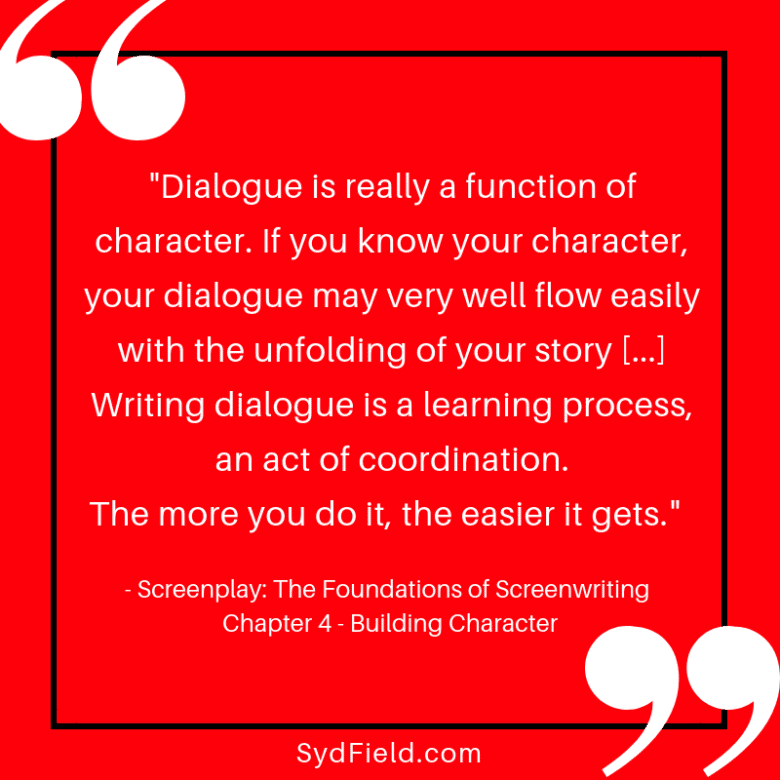SOLVE THE MYSTERY OF WRITING DIALOGUE
Recently, I was invited to speak at the Los Angeles chapter of Sisters in Crime, an international organization of authors, readers, publishers, agents, booksellers and librarians bound by a passion for the mystery genre and championing women who write mysteries.
My topic: Screenwriting Dialogue Tips Novelists Can Steal!
As a screenwriter and novelist, I chose to base my talk on the tools that have always worked for me, whether writing a script or prose: the Syd Field screenwriting method, and the tips for writing dialogue from his seminal text, Screenplay – The Foundations of Screenwriting.
The first screenwriting tip I shared with this group of mystery writers was Syd’s teaching that first and foremost, “dialogue is a function of character.”
Simply put, the words: Hey, Hello, Hiya, and Yo are all greetings, yet they each offer a glimpse of who a character is by which greeting you’ve given them to use.
As Syd teaches, “If you know your character, your dialogue may very well flow easily with the unfolding of your story […] Writing dialogue is a learning process, an act of coordination. The more you do it, the easier it gets.”
The next set of tips for novelists to steal from screenwriters came from Syd’s review of the purpose of dialogue in Chapter 14, “Writing the Screenplay” –
Dialogue:
- moves the story forward;
- reveals information about the characters – after all, they do have a history;
- communicates necessary facts and information to the reader;
- establishes character relationships, making them real, natural, and spontaneous;
- gives your characters depth, insight, and purpose;
- reveals the emotional states of your characters; and
- comments on the action.
For a well-written screenplay, each line of dialogue needs to match one of these traits. If the dialogue doesn’t do at least one of these things, then delete it, no matter how clever it seems!
During the Sisters in Crime event, one novelist was concerned about always identifying the person speaking by name, using “Mary said” or “said John” – it bothered him because he wasn’t writing a screenplay where you put the character’s name atop their dialogue. What’s a novelist to do so the reader knows who is speaking without always mentioning their name?
First, I mentioned that just because screenplays show the character names atop the dialogue, in a problematic script, the dialogue can still sound bland and repetitive. It’s not about putting a name to the dialogue that ensures your writing is distinctive. It’s about the content that reveals the character.
Again, the answer to this issue is as Syd provides: “Know your character.” And how does a writer get to know their characters? Character Bios. Trust me, I’m not always eager to write up the history of my characters from birth, but I do them because it’s an exercise that informs the context of each character’s worldview, their personality and their dramatic need.
For instance, let’s say one character was raised by a strict parent who, among other things, demanded they speak “proper” English. They were never allowed to say “yeah” or “nah” but always “yes” or even “yes, ma’am”. And another character had more lenient parents, in terms of grammar, and could say “nah” or “uh uh” or “no way!” Once you’ve established these varied speech patterns, and are consistent, your reader will never be confused about who is speaking. In novels and screenplays, if done right, the dialogue of each character will be distinctive enough that even if names were removed midway through, the reader would have a pretty good idea of who’s talking.
And it’s not just speech patterns. Dialogue is a function of character. How does each character reveal information that is relevant to the story? If one person is a cynic, their dialogue would be radically different from the optimist, or the surfer dude, the hipster, and so on. They would give the same information in a different manner.
“Elvis has left the building”
“Elvis took up and left.”
“Elvis? He’s gone, baby.”
“Dude’s outta here.”
Same information, clearly given by four different characters as identified through their dialogue. In your first draft, you may just write the obvious, but in the re-write, and there is always the re-write, have fun and really refine the voices of your characters. As Syd teaches: “Writing dialogue is a learning process, an act of coordination. The more you do it, the easier it gets.”
Whether writing a novel or a screenplay, follow Syd’s tips in Screenplay – The Foundations of Screenwriting to “know your character” and there will be no mystery to crafting vibrant, distinctive dialogue.


Comments are closed.